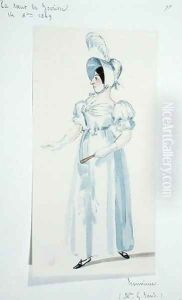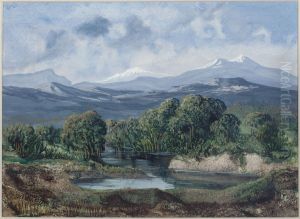Maurice Sand Paintings
Maurice Sand, born Jean-François-Maurice-Arnauld, Baron Dudevant, on June 30, 1823, in Paris, France, was a noted French illustrator, writer, and entomologist. He was the son of the famous French novelist George Sand (Aurore Dupin) and Baron Casimir Dudevant. Maurice Sand's upbringing in the literary and intellectually stimulating environment provided by his mother played a significant role in shaping his artistic and scholarly pursuits. Despite the eventual separation of his parents, Maurice maintained a close relationship with his mother, which influenced his career and personal development.
Maurice Sand's artistic talents were evident from a young age, and he pursued his interests with vigor, studying painting and drawing under various masters. However, he is perhaps best known for his contributions to the field of theater, particularly through his detailed studies and illustrations of traditional French folk plays and costumes. His work in this area was pioneering, offering valuable insights into French folk traditions and theater history. His published works, including 'Masques et bouffons' (Comedie Italienne), reflect his deep research and understanding of the subject matter, earning him a respected place among 19th-century European artists and scholars.
Beyond his contributions to art and theater, Maurice Sand also had a keen interest in entomology, the study of insects. He authored several works on the topic, contributing to the scientific community's understanding of entomology during his time. This aspect of his work, though less known, underscores the breadth of his interests and his versatility as a scholar and artist.
Maurice Sand's personal life, much like his mother's, was marked by his intellectual pursuits and artistic collaborations. He was married to Lina Calamatta, who supported his career and shared his artistic and scholarly interests. Maurice Sand's legacy, though overshadowed to some extent by the towering figure of his mother, remains significant in the realms of French art, theater, and science. He passed away on September 4, 1889, leaving behind a body of work that continues to be studied and appreciated for its depth and diversity. Maurice Sand's contributions to the arts and sciences exemplify the intersection of creativity and intellectual inquiry, making him a noteworthy figure in the landscape of 19th-century European culture.

